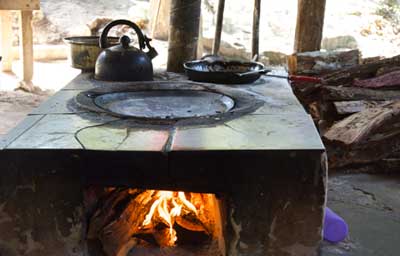Conservación de fauna silvestre en áreas dedicadas a la ganadería: prevención de ataques de jaguar

En los primeros años de la década de 1990, en el contexto de la naciente iniciativa del Corredor Biológico Mesoamericano (CBM), Biocenosis proponía considerar como sitio prioritario para el estado de Yucatán a la región conocida como Sierrita de Ticul. El CBM quedó formalizado en 1997, pero las prioridades se dirigieron hacia la región costera buscando consolidar un corredor entre las reservas de Ría Lagartos, ubicada en el oriente del estado, y Celestún en el extremo occidental del mismo. Esos eran los comienzos de una relación entre Biocenosis y la conservación de los corredores de selva en la Península de Yucatán. En esos años, Biocenosis trabajó en la propuesta, decreto, consolidación y desarrollo de las reservas Kabah, El Palmar y Dzilam, todas en Yucatán, pero la Sierrita de Ticul tuvo que esperar hasta 2011 para tener protección legal cuando fue declarada la Reserva Estatal Biocultural del Puuc, también mediante una importante gestión de esta organización. Biocenosis comenzó a trabajar en lo que hoy es la Reserva Estatal Dzilam en convenio con U.S. Fish & Wildlife Service para la conservación de los hábitats invernales de las aves migratorias, los cuales ya mostraban afectaciones derivadas del avance de la frontera agropecuaria. Con ese proyecto se evidenció que la presión que estaba provocando el avance de la ganadería en el territorio ya no solo afectaba a los humedales en perjuicio de estas aves, sino también a los hábitats utilizados por las poblaciones de jaguares y otros mamíferos. Por esta razón, el proyecto evolucionó respondiendo a la creciente problemática que estas áreas protegidas escenificaban, dado que al expandirse los potreros sobre las zonas habitadas por grandes felinos comenzó a intensificarse el conflicto que representa su efecto depredador sobre el ganado doméstico. De pronto el jaguar comenzó a tener una relevancia mayor como objetivo de conservación a nivel nacional, y el proyecto evolucionó en ese sentido. Paralelamente, la UNAM realizó una convocatoria a todos los que trabajaban con jaguares para contribuir con el primer Censo del Jaguar y sus Presas (CENJAGUAR). Biocenosis, no obstante no dedicaba esfuerzos dirigidos con énfasis en el monitoreo de esta especie, pero logró tener un rol en aquel grupo de instituciones por sus esfuerzos conducidos a tratar de conciliar el conflicto entre ganaderos y las poblaciones de estos depredadores. La actividad ganadera en la Península de Yucatán es relativamente nueva, ya que se remonta a alrededor de 60 años atrás. No obstante, es tiempo suficiente para que ya se encuentren muy arraigadas algunas costumbres en el manejo del ganado, que lo hacen más susceptible al ataque de jaguares. Como ejemplo, durante el día los vaqueros mantienen al ganado en corrales, y cuando cae la noche los sueltan para pastorear en el monte, justamente durante las horas en que los jaguares tienen su mayor actividad.
Como es lógico, no podía iniciarse un acuerdo con los ganaderos con el simple pretexto de conservar al jaguar. La propuesta se dirigió a beneficiar a los productores vecinos de las áreas protegidas con la entrega de ciertos equipos en comodato y capacitaciones tendientes a reducir las probabilidades de encuentros entre jaguares y ganado. Como primera medida se propuso la dotación, instalación y capacitación para el uso de cercos eléctricos. Inicialmente, los cercos eléctricos fueron utilizados para instrumentar el sistema de pastoreo intensivo tecnificado y con ello aumentar la producción de forraje en áreas que ya estaban destinadas como potrero. Luego evolucionó como barrera protectora del hato al colocarse en la periferia de los llamados cercos de pernocta, lugar donde se protege al ganado durante la noche que es cuando estos felinos despliegan todas sus capacidades. La dotación de equipos fue complementada con pequeños sistemas de riego para fomentar el cultivo de pastos de corte, propiciando la producción de alimento en beneficio del ganado y su propietario. De esa manera se logran varios beneficios, ya que por un lado se fomenta la producción de forraje a la vez que se reduce la presión del pastoreo del ganado en el sotobosque, lo que adicionalmente permite la regeneración de los montes en favor de la vida silvestre que ahí convive. Por otra parte, se disminuye la probabilidad de encuentro entre jaguares y ganado, y se crea una barrera que limita el acceso de los depredadores en las áreas de custodia. Buscando tener mayor influencia entre los ganaderos de la región, se profundizó sobre las diversas causas de muerte de ganado, con lo cual se evidenció que existen otras causas que afectan a los productores en mucho mayor medida pero son menos espectaculares, como es el caso del derrengue o rabia paralítica producida por la mordida de vampiros portadores. Por esta razón, el proyecto ahora también brinda talleres de capacitación en manejo sanitario del ganado. Es así que en el año 2000 se comenzó con cuatro ranchos ganaderos de Dzilam, en tanto que fue alrededor de 2002 cuando se pudo demostrar al primer ganadero que el plan funcionaba, y de esa manera se convirtió en un promotor entre sus pares. De manera que aquel proyecto financiado inicialmente por USF&WS fue incrementando anualmente su área de influencia sumando dos ranchos cada año hasta llegar a ocho. Luego hubo un espacio en que no se lograron apoyos, pero un nuevo proyecto financiado por el CBM permitió sumar nueve ranchos más, y más tarde otros dos con apoyo de SAGARPA. En total son alrededor de 18 ó 20 ranchos influenciados directamente por el proyecto, y si bien se continua avanzando al contar con nuevas colaboraciones de organizaciones como The Nature Conservancy y la Alianza MREDD+ y diversificando las áreas de influencia, aún es inmensa la labor por desarrollar para lograr conciliar los legítimos intereses de quienes se dedican a la ganadería con aquellos que buscan la conservación de los grandes carnívoros y otras especies silvestres. Uno de los mayores retos, el menos en la porción norte de la península, es modificar la fuertemente arraigada costumbre de sacar a pastorear al ganado durante la noche. Esto se debe a que los acuerdos se realizan con el dueño del rancho, pero quien realmente maneja al ganado es el vaquero. Tuvimos un caso aleccionador, comenta Carlos Alcérreca, director de Biocenosis: “en un rancho colindante con la Reserva Celestún habíamos instalado un cerco eléctrico y ayudamos a implantar pasturas con sistema de riego incluido. Todo marchó bien durante meses, pero un fin de semana el vaquero no podía permanecer en el rancho, y decidió hacer lo que siempre había hecho: liberar al ganado para que pastoree libremente, solo por esa vez. Esa primera noche fue suficiente, un jaguar atacó a dos becerros”. Este testimonio ejemplifica la importancia de la capacitación permanente, la creatividad, la constancia y el acompañamiento técnico en la solución de los problemas vinculados a las múltiples facetas implícitas en los esfuerzos por conservar el entorno biológico. Para los casos de depredación de ganado por carnívoros silvestres existe un fondo de aseguramiento, quizás sin precedentes a nivel internacional, que compensa económicamente a los productores que resultan afectados, y de esta manera se contribuye a detener la reacción de represalia hacia dichos carnívoros.
|





















